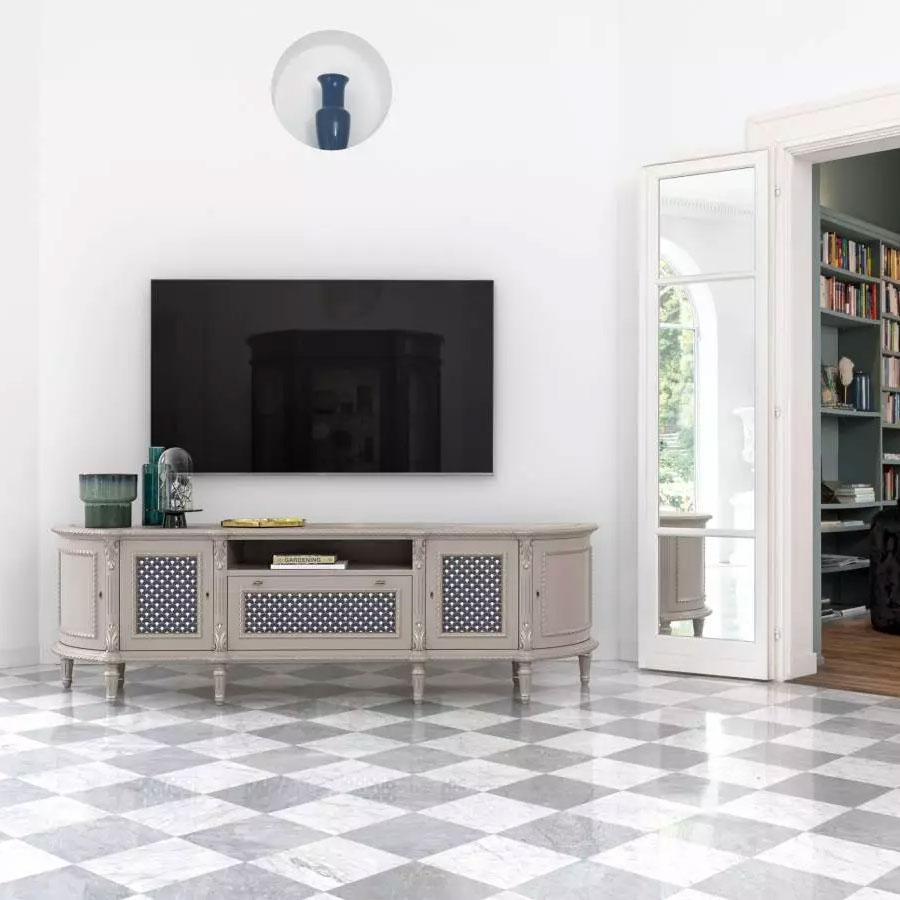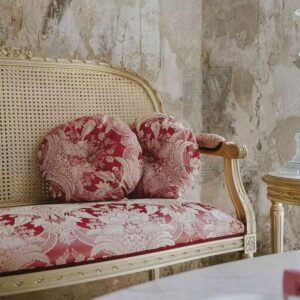Key Takeaways
- Timeless Investment Value: Elegant traditional furniture appreciates over time through impeccable Italian craftsmanship, offering superior cost-per-year value compared to disposable alternatives that require replacement every five years.
- Sustainable Longevity: Heirloom-quality pieces built to last generations dramatically reduce environmental impact, transforming luxury from excess into responsible stewardship by eliminating landfill waste.
- Market Momentum: The global luxury furniture market projects growth from $32.34 billion in 2025 to $43.14 billion by 2030, reflecting post-pandemic appreciation for quality, comfort, and lasting beauty in home environments.
- Design Versatility: Mixing elegant traditional furniture with contemporary elements creates compelling interiors, as strong silhouettes and classical proportions transcend eras while adding warmth and character to modern spaces.
The furniture trend everyone dismissed just became inevitable.
After years of minimalist dominance, elegant traditional furniture is experiencing something remarkable. Design professionals report genuine excitement about antiques and classic pieces returning to contemporary spaces. Dark woods like walnut and oak are being celebrated as perfect companions to modern elements.
Your home does not need to choose between heritage and now.
The Hidden Cost of Disposable Design
Americans discarded over 12 million tons of furniture in 2018 alone, according to EPA data. That represents 4.1 percent of all landfill waste, a dramatic increase from just 2.2 million tons in 1960.
The culprit? Cheaply made furniture with an average lifespan of only five years.
Fast furniture follows the same destructive pattern as fast fashion. You purchase a piece that looks acceptable, use it briefly, then replace it when trends shift or quality fails. The cycle continues, and landfills overflow with particleboard and synthetic materials that will not decompose for centuries.
Elegant traditional furniture built with authentic craftsmanship offers a different path entirely.
Why Quality Never Goes Out of Style
Italian artisans invest weeks or even months on intricate hand-carved pieces, using techniques their predecessors employed centuries ago. Hand tools remain the primary method in premium elegant traditional furniture, with master craftsmen relying on their skill rather than automated machinery.
This level of dedication produces something fundamentally different from mass-manufactured alternatives.
The joinery techniques perfected during the Renaissance create structural integrity that lasts generations. Hand-selected walnut develops a patina that deepens with age rather than deteriorating. Marble sourced from historic quarries maintains its elegance indefinitely.
These pieces do not just survive. They appreciate.
High-quality elegant traditional furniture sees its value increase over time due to impeccable craftsmanship and enduring aesthetic appeal. You are not purchasing disposable decor. You are acquiring investment pieces that future generations might cherish.
The Market Speaks Clearly
The global luxury furniture market tells a compelling story about what discerning buyers actually want. Market projections show growth from $32.34 billion in 2025 to $43.14 billion by 2030, advancing at a 5.93 percent annual rate.
Rising high-net-worth individual wealth drives part of this momentum. But there is something deeper happening.
Post-pandemic lifestyle shifts have fundamentally changed how people think about their homes. Your living space became your office, your sanctuary, your entertainment venue. That transformation created a new appreciation for quality, comfort, and lasting beauty.
Heritage European craftsmanship and authentic provenance storytelling reinforce this market growth. Affluent buyers increasingly treat luxury furniture as portable investments that signal cultural capital and personal sophistication.
Mixing Eras Creates Richer Spaces
The most compelling interiors blend elegant traditional furniture with contemporary elements. Modern lighting paired with classic pieces creates visual interest impossible to achieve with single-era design.
Younger generations embrace this approach enthusiastically. Millennials are mixing antiques with modern pieces to create something uniquely their own, according to furniture experts. They want spaces that tell stories rather than following generic templates.
Your grandmother’s ornate dining table gains new life when surrounded by minimalist chairs. A hand-carved Italian credenza becomes a stunning focal point against clean white walls. Elegant traditional furniture in rich fabrics adds warmth and texture to otherwise stark modern rooms.
This fusion approach respects both heritage and innovation.
What Makes Elegant Traditional Furniture Work Today
The key lies in selection and placement. Not every traditional piece suits every modern space, but the right choices create extraordinary results.
Look for pieces with strong silhouettes that read clearly even in simplified contexts. A beautifully proportioned armchair with refined lines works in modern settings because its fundamental design principles remain sound. Proportion, balance, and harmony transcend specific eras.
Consider scale carefully. Oversized elegant traditional furniture can overwhelm contemporary rooms with lower ceilings and open floor plans. Choose pieces that respect your space while making meaningful statements.
Material quality matters immensely. Authentic wood with visible grain, genuine leather that develops character, and natural stone with unique veining all bring irreplaceable organic warmth to modern interiors dominated by glass, metal, and synthetic materials.
The Craftsmanship Difference You Can Feel
Walk into a showroom displaying both mass-produced and traditionally crafted furniture. The difference reveals itself immediately through your senses.
Run your hand along a machine-cut edge versus a hand-finished surface. The latter invites continued touch, while the former feels merely functional. Examine joinery on elegant traditional furniture versus stapled particleboard. One promises decades of service, the other threatens failure within years.
Sit in a chair built by artisans who understand human comfort versus one designed purely for visual appeal and cost efficiency. Your body recognizes authentic ergonomic consideration instantly.
These tangible differences justify the investment premium of elegant traditional furniture commands.
Sustainability Through Longevity
The most sustainable furniture you can purchase is furniture you will never need to replace.
Elegant traditional furniture built to last your entire life dramatically reduces environmental impact compared to disposable alternatives requiring replacement every five to seven years. Manufacturing fewer items means less resource extraction, less energy consumption, and less waste.
Heirloom quality furniture that passes between generations represents the ultimate in sustainable design. Your investment becomes your children’s inheritance rather than landfill burden.
This perspective reframes luxury as responsibility rather than excess.
Making Elegant Traditional Furniture Work in Your Space
Start with one statement piece rather than attempting complete room transformations. An elegant traditional dining table or upholstered sofa can anchor a space while other elements remain contemporary.
Use traditional pieces to add the warmth and character that purely modern rooms often lack. Smooth surfaces and minimal ornamentation create visual calm, but they can feel cold without counterbalancing elements that carry history and texture.
Consider your existing color palette. Elegant traditional furniture in rich woods and classic fabrics often works beautifully with neutral modern backgrounds. The contrast creates depth without clash.
Work with design professionals who understand both traditional craftsmanship and contemporary aesthetics. Their expertise helps you identify pieces that bridge eras successfully while reflecting your personal style.
Beyond Trends to Timelessness
Design trends cycle predictably. Minimalism gives way to maximalism, which yields to transitional styles, which eventually returns to minimalism. Following trends means perpetually updating your home to maintain relevance.
Elegant traditional furniture built on classical design principles transcends these cycles. A well-proportioned piece designed in 1850 works in homes today because it embodies fundamental aesthetic truths about balance, proportion, and harmony.
These principles do not expire. They persist across centuries because they reflect something deeper than fashion.
Your home becomes a curated collection of meaningful pieces rather than a catalog of current trends. That distinction matters more than most people realize initially.
The Showroom Experience Matters
Selecting elegant traditional furniture requires seeing, touching, and experiencing pieces in person. Photographs cannot convey the depth of hand-rubbed finishes or the suppleness of premium leather.
Extensive material libraries displaying thousands of fabric, leather, and finish options enable true customization. Your traditional piece can reflect your specific color preferences and texture requirements while maintaining authentic construction methods.
This personalization creates furniture that fits your life precisely rather than forcing your life to accommodate generic offerings.
Your Space Tells Your Story
The furniture you choose reveals what you value. Disposable pieces suggest temporary thinking and trend-following. Investment pieces demonstrate appreciation for craftsmanship, sustainability, and enduring beauty.
Elegant traditional furniture in modern homes creates visual conversation between past and present. It acknowledges design heritage while embracing contemporary living. It respects artisanal skill while serving current needs.
Your rooms gain depth, character, and authenticity impossible to achieve through purely modern selections.
The question is not whether elegant traditional furniture belongs in modern homes. The evidence from market growth, sustainability concerns, and design trends answers that definitively.
The real question is which pieces will tell your story most authentically.
Experience Italian Craftsmanship in Person
The difference between mass-produced furniture and elegant traditional pieces becomes undeniable when you encounter authentic Italian craftsmanship firsthand. At Michelangelo Designs’ 35,000-square-foot showroom in Passaic, New Jersey, you can explore curated collections from renowned Italian manufacturers including Angelo Cappellini, Egoitaliano, and Domus Design.
Discover how elegant traditional furniture can transform your contemporary spaces into curated environments that celebrate both heritage and innovation.



